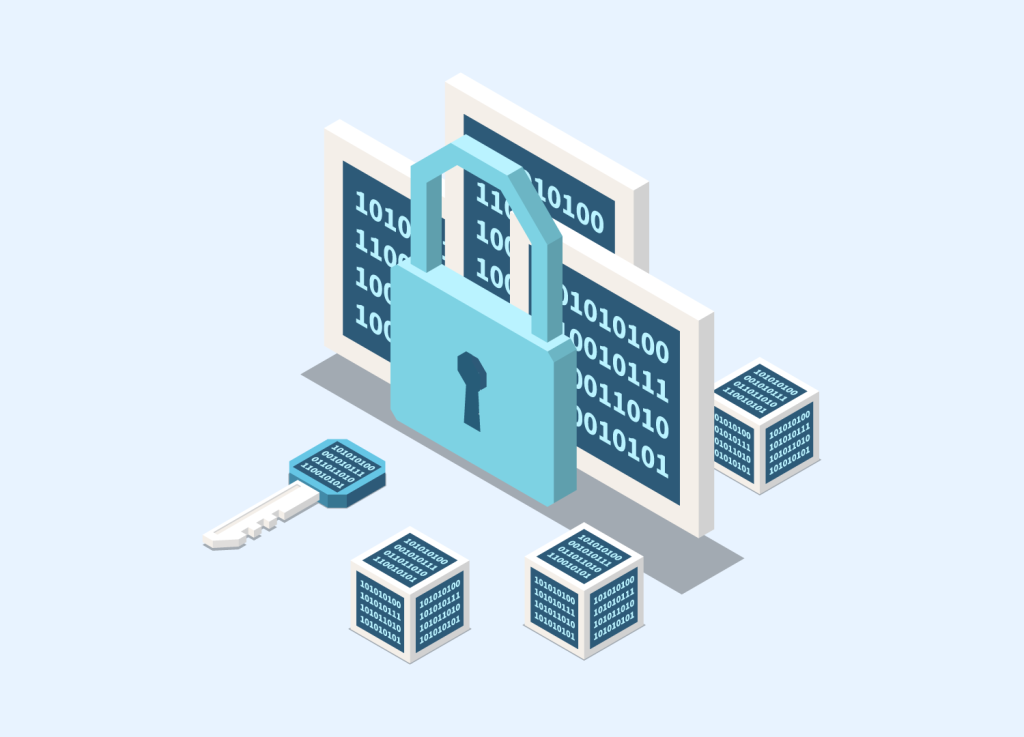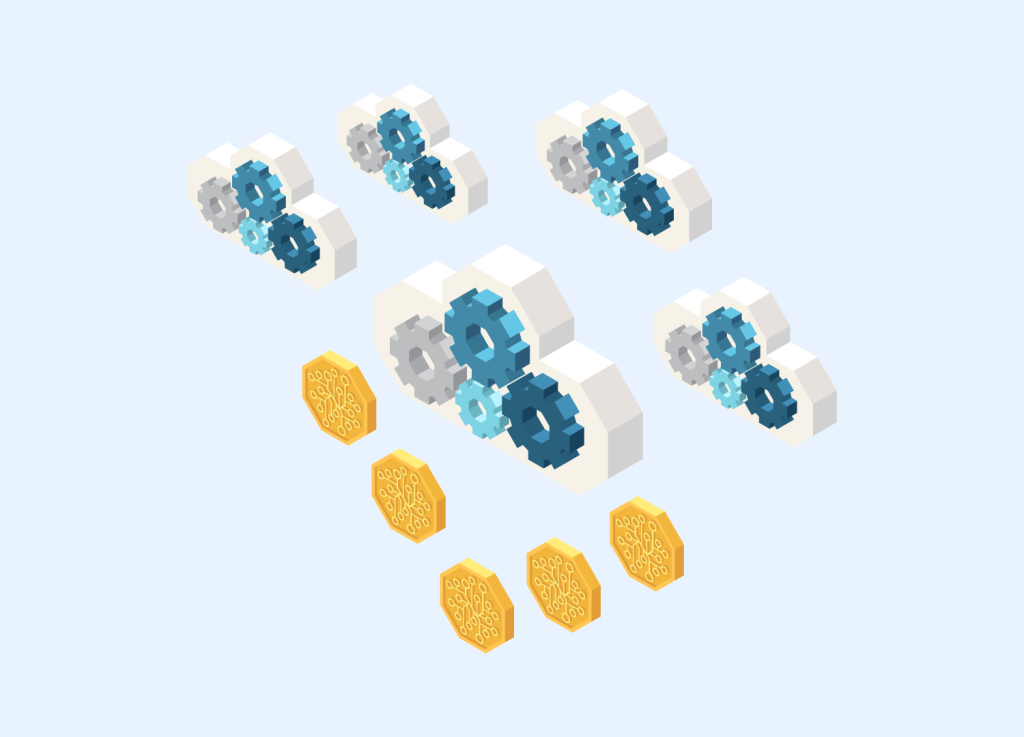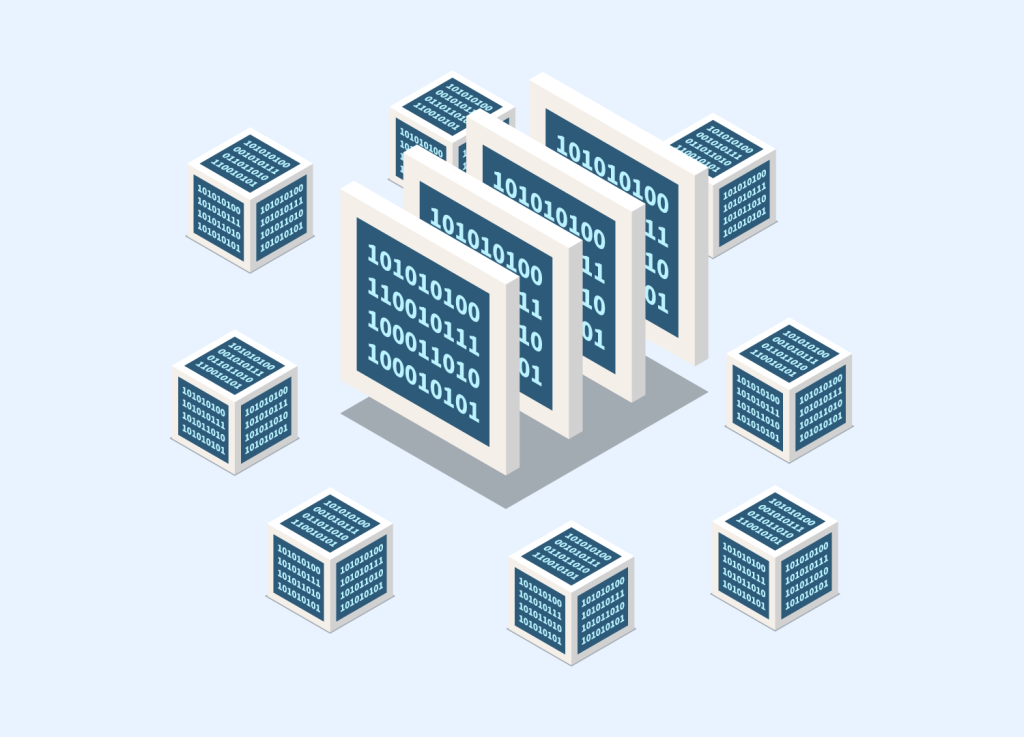
What is Blockchain?
What is Blockchain? What are its uses? How does it work? These Frequently Asked Questions about Amazing Blockchain Technology have been on many people’s minds lately. Understanding this technology is not easy for beginners and even professionals. Due to the growing popularity of cryptocurrency transactions such as Bitcoin and Atrium that are based on Blockchain technology; Many people have become familiar with this phrase recently; In fact Blockchain; As a general ledger, is responsible for storing all bitcoin transactions, while digital currencies are just one part of the extraordinary Blockchain world.
In the following, we intend to answer all these questions in simple and non-technical language and introduce you to Blockchain and its users.
Definition of Blockchain
Blockchain is a revolutionary technology in the world’s management systems and is a system that records reports and information, unlike other systems, the information stored on this system is shared among all members of a network. ; In fact, it is a kind of decentralized database that stores information, but its difference from other databases is that there are rules that must be observed when entering new information into Blockchain. Also, in the Blockchain, after adding and saving data, It cannot be deleted or changed; through these rules and the encryption and distribution of data, almost it becomes impossible to hack into stored data and duplicate similar copies of a database across an entire network.
From a technical point of view, Blockchain can be thought of as an information archive; Which is not much different from most of the concepts you are familiar with, such as Wikipedia; Using Blockchain, people can record various documents in one type of information archive, and users can control how information is recorded and updated.
Blockchain technology is not fundamental; Rather, it is a set of processes of alerting, cryptography, mass distribution, etc. that have given rise to this idea. Before blockchain, there were distributed ledgers, which were a place to record all the information of a system or business. By examining the ledger, they could observe transactions, personal details, etc. the reason for using the distributed word in this phrase is that the ledger is not available to one or more particular people, and all members of the network should have access to a copy of it. They can check the condition of the system at any time, But Blockchain, with its block structure, has improved distributed ledger technology.
How does blockchain work?
Blockchain is a combination of the two words, block, and chain. This technology performs its function in a chain of blocks in which any information is stored and recorded in each block. Each block is created next to the previous block that contains the information that it Connects to the previous block, and the blocks are placed next to each other in construction order. As a result, by connecting the blocks, a blockchain structure is formed.
What is the use of hash in blockchain?
We want to add this explanation in connection with this issue; Each of these blocks has a hash; Hashing is the process of holding blocks together to form a blockchain. In the hashing process, data of any size are entered into specific mathematical functions to generate the output, which is the “hash”.The hash functions used in blockchains are such that the probability of finding two data that have exactly the same output is almost zero.
In other words, a hash is a text string that uses a special mathematical function to prevent the system from fraud and it is always a constant data or input. With the help of hash solutions, it is not possible to change the information Recorded in the blocks.
In Blockchain each block in addition to its unique hash; Includes the hash of the previous block and by changing the information of a block; The hash of that block also changes, making the Blockchain invalid.
data and information of blockchain are not stored on a server or computer; By connecting each computer to the network; it Will receive a copy of the information.in other words, any system that connects to the network; Has a copy of the blockchain called Node; By connecting to the blockchain as a Node; You have access to the complete version of the data but you can not make any changes to the data.
Who Invented Blockchain?
Stuart Haber and W. Scott Stornetta were two Berkeley mathematicians who first developed Blockchain technology in 1991 with the goal of creating a system where the timestamp of documents is immutable; Developed. Many people equate the concept of Blockchain with Bitcoin; Because Blockchain technology was recognized at the same time as the launch of Bitcoin and was first recognized in Bitcoin coding in 2009; At the time of the creation of bitcoin, its creator had used previous technologies to create bitcoin, and blockchain was not a new technology; Although its generation was developing. Over time, with the inspiration and complete knowledge of this technology, experts realized that the blockchain has many applications and can be used in other fields in addition to cryptocurrency.

9 main Uses of blockchain
As we mentioned at the beginning of this article, the most successful and fundamental application of Blockchain technology is decentralized cryptocurrency and bitcoin, in addition to its role in maintaining the security of transactions and non-fraud in financial transactions of digital currencies this technology. It has significant applications in various fields. Even Operavps has provided the conditions that everyone can buy VPS with bitcoin; as we use this technology to pay and exchange money; This technology is used in almost every industry that is tradable, such as exchanging money and products, and in any field where information needs to be stored and transmitted.
This technology can be used wherever the power of creativity and the human mind allows, and there are no restrictions on using these advanced technologies; Here are some examples of its applications.
-
Finance and Trade
The most common use of blockchain is in this area; Transferring money internationally with the traditional banking system has always been a problem due to the complex networks of intermediaries. cryptocurrency and blockchains have been created around the world by eliminating intermediaries to make the process easier and faster; Especially in recent years, with the formation of investment platforms, decentralized Currency Exchange, and payment systems, the use of blockchain has grown a lot and people can use Blockchain solutions in a secure environment to make fast and cheap transactions; Even in the digital currency market, a section called Decentralized Finance or Defi has been created to provide various financial services projects, and you can also use this technology to turn your assets into digital tokens and offered them as transferable assets.
-
Gaming industry
The computer game industry today is one of the largest industries in the world of entertainment and recreation that can use blockchain. Game companies in most computer games dominate gamers and they have to follow the rules of game developers, and it is not possible for users to apply changes and development in many of them, But in games that are built in a decentralized way on the blockchain; Gamers can create a variety of items and participate in the structural aspects of the game, and they can also by using NFTs to use items created in a game on other platforms and even sell them. With the use of blockchain technology, games have maintained their stability in the long run, and all the elements in the game can be transferred as encrypted sets and can find real value, and can be bought and sold in the real world. As a result, blockchain in the field of computer games can be useful for managing, maintaining, and decentralizing ownership.
-
Health system
Secure storage of medical data is essential for any healthcare system, and Relying on a centralized treatment system puts it in a critical and dangerous position; Blockchain technology is the best option for storing medical data with the security and transparency of its platform, and it can make positive changes in this regard as well.
Using blockchain capabilities, patients can privately share their medical information in encrypted form with other health care providers. Their medical records can be protected from intrusion, Or you can access your records and prescriptions if you need. In general, if the present current health system is in a safe and global environment, the exchange of information between systems will expand rapidly. This action is possible only with blockchain technology, which will ultimately improve the treatment system in the world.
-
Saving the distributed file in the blockchain
Naturally, storing a distributed file on the Internet has many advantages over traditional centralized methods; Data stored as centralized services in the cloud; they run the risk of deleting or infiltrating information and Sometimes, users will not be able to access the server and information at the request of administrators.
The majority of people assume that there is no difference between blockchain file storage solutions and other storage methods; Either way, you have access to the data, and you can upload and store the data; But any file stored in Blockchain; Is distributed among several Nodes, or sometimes part of a file may be stored in each Node; You can request each Node to present different parts of your file and combine them to create the original file.
This space is created by people who give their bandwidth and storage space to the network and are usually punished if they do not follow the rules or fail to store and submit files.
-
Blockchain application in IoT
With an extensive connection to the Internet by physical objects; Blockchain can also communicate and collaborate between objects in this area and also has the ability to develop the IoT workspace; For example, automatic machine-to-machine payment as a new branch of the economy, which would require a powerful and secure solution like Blockchain to run.
-
Using blockchain in charity
One of the concerns of charity institutes is the restrictions on accepting charitable funds and tracking the final destination of donated funds, which causes people not to support those. Charities institutes are looking for ways to circumvent these limitations that blockchain technology can Resolve through its transparency, cost savings, and global engagement. Crypto-philanthropy is one of the active organizations in the field of a blockchain charity foundation, which is expanding globally and strives to achieve its goals using blockchain technology.
-
Ability to create a digital ID
A lot of data about our identity and personal information is stored daily on centralized servers, which requires a quick solution for secure management of identities; blockchain, With encryption capability, provides users with data ownership while protecting their privacy, and they can keep specific information private and share information they want to share with others; This application of blockchain has become more important with the increasing use of social networks.
-
Government agencies
The efficiency of blockchain in government organizations in various fields also plays an important role, such as; Elections, financial management, management of identification documents, etc.
-
Transportation services
The most worrying economic sectors are transportation networks. Also, the goal of the main sectors of successful companies is usually to manage the distribution of products and services from the Producer to the consumer, which with the use of blockchain technology, can be a better result in tracking products, Ensuring No manipulation of prices and products, controlling trucks, and so on. This efficiency is exactly what many industries need to be stronger and more reliable, and blockchain meets precisely that need.

Types of Blockchain
Blockchains in factors such as the consensus algorithm implementation model, conditions of the new Node joining, and the ability to view transactions. they are generally divided into four categories:
- Public Blockchain
- Private Blockchain
- Consortium Blockchain
- Hybrid Blockchain
Note: The consensus algorithm is a set of rules that determine the steps of processing and verifying transactions by blockchain network members. PoW and PoS are two examples of widely used consensus algorithms.
Public blockchain: A distributed general ledger system with no permissions (Permission-less); There are no restrictions on viewing transactions and new nodes joining the network to confirm transactions; You will be allowed to access current and previous records, verify transactions or perform proof of work for subsequent blocks and extraction and mining.
In this case, each person enters the blockchain platform by accessing the Internet to become an authorized node and participate in the network. The power of the nodes is the same, and the network is entirely decentralized.
A public blockchain has high security, trust, and transparency, but the speed of transactions in it is low, and you encounter scalability problems when the network is busy; The most basic use of Public blockchains is to extract and exchange digital currencies and the most common types of Public blockchains are networks such as Atrium, Bitcoin and Light Coin.
So public blockchains have many nodes worldwide, and data on the network is readily available to everyone.
Private blockchain: These types of blockchains are not available to everyone and are used mainly by companies and organizations that only a limited number of members are allowed to access, also, Permits, accesses, and security are in the hands of the controlling organization And only specific Nodes are allowed to join the network.
The use of private blockchain is similar to Public blockchain, except that they have a more limited network and are implemented in smaller dimensions, and they use for items such as voting, supply chain management, digital identity, property ownership, and others. Private blockchains include Multichain, Hyperledger projects, and Corda.
As a result, a Private blockchain is a limited network of authorized nodes, and only people operating within that network can access the information exchanged between the nodes.
Consortium Blockchain: A semi-centralized network generally managed by several different organizations. These blockchains are used mainly by banks and government organizations, and unlike private blockchains, management and exchange of information are done between various organizations. Therefore, network security will increase, and organizations will have more control over resource management. Consortium Blockchain, R3, and Energy Web Foundation are the most common examples.
Hybrid Blockchain:This type of Blockchain is a combination of Public Blockchain and Private Blockchain and has the characteristics of both types. Hybrid Blockchain has high flexibility; Users can control people’s access to data stored in the Blockchain and determine what part of the Blockchain is available to everyone and what part of a private network is kept private. Users can also easily join a private blockchain with multiple public blockchains. Usually, a private part of the Hybrid Blockchain transaction is approved within the network, and users can publish it on the public Blockchain. Everyone can access public sections of the network but need permission to access the private sections. Dragonchain is an example of a Hybrid Blockchain.
Advantages and disadvantages of Blockchain
With its unique capabilities, Blockchain is trying to solve problems in various fields such as finance and file storage, and it is involved in creating multiple decentralized systems of this technology. Here are the essential benefits of Blockchain.
Increase security: Due to the chain of information and the use of encryption rules andConsensus algorithm in blockchain, the possibility of changing information is almost zero, so this platform increases security as much as possible, and You will not have to worry about security issues.
Transparency: Although the Processing steps and Confirmation of information in the blockchain, unlike in traditional systems, are performed by users, with the help of a consensus algorithm, everyone has a copy of the general office, and no one can do work in the network without the permission of the majority of the network; The transparency of such a system is very important in large organizations and companies.
Cost reduction: with peer-to-peer communication capability, there will be no need for a central control unit and the intermediary; This advantage reduces the costs that companies have to pay to provide services to intermediaries.
Information Traceability: As we explained, all transactions and related information are stored in the Blockchain, and you can easily track this information, but there is an exception in this subject, such as Blockchain Monero, which was created to make its transactions untraceable.
Elimination of censorship: In a public blockchain, no central organization monitors network nodes, all members have the same power, and you can always access and view the information recorded in the blocks.
Reliable and unmediated technology: In most payment systems, it is impossible to make an unmediated transaction, such as a bank or credit card company, but in blockchain technology, intermediaries have been removed, and their presence in the network is not necessary. Because the distributed network of nodes approves transactions through a process called mining, for this reason, the immediacy and reliability of blockchains are the strong points of the emergence of this technology because the blockchain system eliminates the risk of trust in a single organization; it also by removing intermediaries, the transaction fee and overall costs are reduced.
Sustainability: It is tough to delete and change information after registering data in blockchain technology, and it is even impossible. Thanks to this valuable advantage, blockchain is a stable platform for storing important data and financial records, And any changes in the public ledger distributed are permanently recorded and tracked.
Decentralized system: The data in this system is stored on different devices based on a distributed network of Nodes, usually unlike ordinary databases connected to one or more servers; The possibility of cyber attacks and any technical problem in the system and data is complex. Each node can have a copy of the database, so even if a node is offline, it does not affect the security and availability of the network.

Disadvantages of blockchain
We talked about the essential advantages of the blockchain system; now, we will check its problems and disadvantages:
Lack of scalability: The main problem of the Blockchain network is scalability; in times of network congestion and with an increasing number of transactions, the speed decreases, and the fees increase. In addition to blockchain dependence on more extensive networks to verify transactions, there is a limit to blockchain transactions per second and their speed.
Problem editing data: As mentioned, it is difficult to change the data stored in the blockchain, and it was one of its advantages; This is one of the disadvantages of adding data to the blockchain, which is very difficult to change, and blockchain code and requires a hard fork, where a chain is released, and a new chain is generated.
Programming bug: With the slightest bug and software problem in smart contract discussions like DApps, there is possibly losing all the capital available on a platform.
Note: Smart contracts are a set of codes that automatically perform certain transactions on the blockchain when the defined conditions are met.
Blockchain Storage Problem: Blockchain ledger can grow very large over time. Bitcoin blockchain currently requires about 200 GB of storage space. The current growth in blockchain network size seems to outpace the growth of hard drives, and if the total office space of the Blockchain network for downloading and storage becomes too large, there is a risk of losing network nodes.
Time-consuming and difficult updates: Updating decentralized systems is more complicated than centralized systems, and it takes hours, even days, to implement such events on blockchain networks to go through various steps and obtain the majority’s satisfaction in performing the update; the process of such events in the network of the Blockchain is called a fork.
Note: Fork is a process in which they modify existing software or make a copy of it; Therefore, in this process, both the original program and the corrected version exist.
Private Key and Risk of Loss of Capital: In blockchain technology, the public key encryption method is used to provide ownership of digital currency units and any data, And for each address in the blockchain, a private key is considered, which uses a private key to access the user’s capital So you must protect the private key and keep it secret. If the private key is misused or lost, you have lost your capital.
Fluctuating market: Due to the nascent technology of Blockchain and the digital currency market, many changes in prices may occur, which cause sharp price fluctuations and increase the risk of operating in this field.
Blockchain network inefficiencies: Blockchain networks that use the pow mechanism are usually inefficient; Because the extraction process is competitive in this field. There is only one winner every ten minutes, and he receives a reward. In practice, this wastes the work of other miners. In recent years, miners have constantly been trying to find a valid hash block to increase their computing power; this affair has led to a significant increase in bitcoin usage resources and caused the bitcoin network to consume more energy than other countries such as Denmark and Ireland.
Possibility of illegal activity: Blockchain decentralization has become very attractive to criminals. Although the goal of decentralization is privacy and confidentiality, generally, it is much easier to track an institution-affiliated banking transaction than illegal Blockchain transactions. Although many efforts have been made to protect the privacy against hacking of this technology, there is a possibility of illicit activity in this system.
FAQ
What is a peer-to-peer network?
One of the network architectures has no central node or server. In this type of network, all nodes are directly connected, and nodes can share their resources; no node is Superior to another, and they perform similar tasks in the network that act as both client and server. If one of the nodes gets offline, you will not have any problem accessing and exchanging information; Instead, it connects to another node.
How is security ensured in the Blockchain?
Blockchains are secured by various mechanisms, including advanced cryptographic techniques and mathematical behavior-decision models.
The two characteristics of consensus and immutability make blockchain secure; Consensus refers to the ability of a network node to reach a consensus to record transactions and build blocks that assure us that network rules are running. The meaning of immutability is to prevent fraud and intrusion into data recorded in the system, which guarantees the stability and immutability of the transaction records. Blockchains also make extensive use of cryptography to secure their data, and in this context, cryptographic hash functions are of great importance. In the blockchain space, the hash of each block is created using the hash of the previous block, which creates a blockchain. The hash identifiers play an essential role in maintaining the security and immutability of the blockchain.
Conclusion:
Although we have reached the end of this article, the story of blockchain technology has begun. Every technology and infrastructure is known to users over time and the unveiling of its capabilities. Blockchain is a new technology that aims to store and transfer any data in a decentralized manner and was introduced to the world as one of the ways to implement DLT technology with the Bitcoin project. In this system, nodes have the task of approving and registering transactions. These nodes are distributed worldwide and use consensus algorithms to perform their functions correctly; Blockchains can Assign network management to users with the help of consensus rules, thus eliminating intermediaries and removing the need for central control. This technology provides its network security by using innovative ideas in cryptography and economics.
This article tried to explain the various aspects of blockchain functionality.
I appreciate your support.